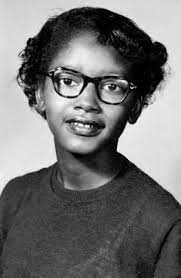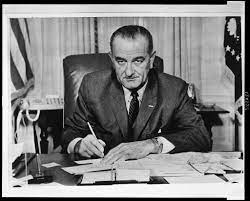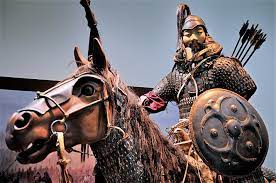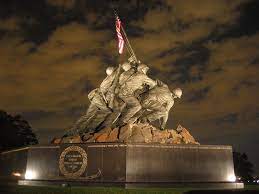When the topic of the Civil Rights Movement comes up for discussion, the most common names which come to mind are those of Rev. Dr. Martin Luther King, Jr. and Rosa Parks. However, the truth is that it took more than one person and his / her stand for the movement to succeed. It actually took millions for that. The unsung heroes of the movement may not have led marches or given grand species. But their efforts informed, inspired, and enabled the movement in various other ways.
There were legal theorists like Pauli Murray, who helped to dismantle segregation through legislation, Fannie Lou Hamer, who spoke without any notes for 13 minutes on live television to draw attention to the venom of racism. Many of the unsung civil rights heroes were unknown due to various reasons like the covert misogyny in the movement which was mostly led by men, for example in the case of Dorothy Height or because of reasons like their sexuality and political beliefs as in the case of leaders like Bayard Rustin. However, in the end, it was the efforts of people from all backgrounds which moved the civil rights movement forward. Though many of the heroes were sidelined, their efforts nevertheless contributed to the movement’s success.
- Claudette Colvin
Claudette Colvin was just fifteen years old in 1955 when she refused to move to the back of a bus due to segregation. She wasn’t Rosa Parks, another Black woman who is widely recognized as having started the Civil Rights Movement in the US when she refused to give up her seat on a bus, also in 1955. Colvin informed the bus driver in Montgomery, Alabama, that she had a constitutional right to sit anywhere on the bus as she pleased. She later recalled that she felt as if history itself was keeping her fixed to the seat.

Colvin had spent her young life quietly observing segregation in Alabama, witnessing injustices like the execution of her neighbor for allegedly raping a white woman, and lesser ones like when Black people had to buy shoes, they couldn’t try them on. They had to take a brown paper bag and draw a diagram of their foot and take it to the store. However, as a young girl of 15 in March 1955, Colvin and her class had started studying influential Black leaders in US history. When Colvin refused to move after being told by the white driver of the bus, he called the police who dragged her off the bus.
Though Colvin refused to go off the bus voluntarily, her school books went flying everywhere and she shouted that it was her constitutional right to sit where she wanted. However, unlike Rosa Parks, Colvin didn’t start protests like Rosa Parks did in the same year. She felt that this was because of her young age, the dark color of her skin and because she got pregnant a few months later. The movement didn’t consider teenagers to be reliable according to Colvin. However, Colvin got her say after a few months when she testified in Browder v Gayle, the case in the Supreme Court which ruled segregation on buses to be unconstitutional. When she was asked on the stand as to why she didn’t move from her seat, Colvin who was then 16, replied that it was because the Blacks were treated wrongfully and nastily.
- Ella Baker
Ella Baker was responsible for developing three major civil rights organizations: the National Association for the Advancement of Colored People (NAACP), the Southern Christian Leadership Conference (SCLC), and the Student Nonviolent Coordinating Committee (SNCC). But she was never interested in any publicity for her work as she found greater importance by being a part of the organizations which were growing. Baker was known to her fellow activists as ‘Fundi’ which means ‘someone who teaches the next generation’ in Swahili.

Baker came from a family of former slaves who her grandparents were. She joined the NAACP in 1940. She worked first as a field secretary and then as a director of branches. In this capacity, she traveled across the nation to speak to Black people about their rights. She also encouraged an NAACP member named Rosa Parks during a workshop held in Montgomery, Alabama.
When Parks took a stand against segregation on buses, Martin Luther King, Jr. and other Black leaders formed the SCLC which Baker joined in 1958. She played an important role in setting the agenda, planning events, and organizing protests. However, SCLC was a male-dominated organization and prioritized male figures like King who had a religious background. It also focused on forcing change through lawsuits.
Baker attended a sit-in protest in Greensboro, North Carolina. Inspired by the young Black activists at this meeting and convinced that they could bring about great changes, Baker helped in the formation of SNCC. SNCC started the Freedom Rides in 1961, which aimed to test
national desegregation laws, and the Freedom Summer in 1963, which aimed at registering Blacks to vote.
However, Baker remains an unsung hero of the civil rights movement as she was a woman in a male-dominated and led movement. James Forman, an SNCC leader, acknowledged that the SNCC helped to inspire many people. However, they didn’t appreciate Ella Baker’s role in the making of the organization.
- Annie Lee Cooper
Annie Lee Cooper didn’t want to be a civil rights hero. On January 25, 1965, she only wanted to vote. But she had to face a much-hated sheriff, Jim Clark on the way to obtaining that right. She later told Jet magazine that she tried to be non-violent but if the white people in authority treated her as brutishly as they had on the day that she had punched the sheriff, then she would do it again.
Cooper, though born in Alabama, had lived partially in the north where she had seen Black people voting. She had registered to vote in two northern states, Kentucky and Ohio but in Selma, Alabama, she was turned away from the voting booth repeatedly because of pretexts like inability to pass a literacy test or being sent home after having spent an entire day waiting to register.
When Martin Luther King, Jr. called on Black Americans to come to the Dallas County courthouse and vote en masse in the winter of 1965, Cooper volunteered immediately. She and other Black activists had been standing in line for many hours when Jim Clark and his policemen came on the scene. She was told by Clark to go home and poked by him in the neck with his billy club. However, shockingly for Clark, Cooper punched him in the face. Subsequently, police pounced on the 54-year-old Cooper, dragged her to jail, and charged her with assault and attempted murder. Martin Luther King Jr. later justified her punching the sheriff saying that though the movement was non-violent, Cooper had punched him after being provoked by him. Her punch encapsulated the frustration that many Blacks felt.
- Bayard Rustin
Bayard Rustin was one of the key people who organized the prominent ‘March on Washington’ in 1963. He was a gay activist who had been active in the civil rights movement right from its
inception. He had conceived a grand march on the capital in 1941 even before the start of the movement in the 1950s. He had joined up with A. Philip Randolph and A. J. Muste to draw up plans for the same. However, President Franklin Roosevelt had given in to their demands at that time after becoming alarmed at the prospect.
Rustin spent the next twenty years shaping the civil rights movement from behind the scenes. He was a Quaker who had traveled to India to learn about Mahatma Gandhi and had urged Martin Luther King Jr. and other activists to embrace Gandhi’s pacifism as a way of life. When Rustin came to Montgomery, Dr. King’s home had many guns. But Rustin and some other pacifists convinced him to adopt pacifism.
Though Rustin was influential in the movement, many Black leaders were uncomfortable with his sexual orientation. Rustin resigned from the SCLC in 1960 when black congressman Clayton Powell Jr. threatened to expose his sexuality. Rustin was approached by Randolph to organize another march on Washington and chalked out the plans in the space of eight weeks. Randolph was put in charge though Rustin worked hard behind the scenes to pull the plan together. Rustin was targeted for his sexuality by many lawmakers as the event approached. Senator Strom Thurmond called Rustin “Mr. March-On-Washington” on the floor of the Senate and categorized him a “sex pervert.” However, other leaders came to Rustin’s defense and the March went off without a hitch.
Still, Rustin didn’t go to Washington after the march to join other leaders there. According to African-American history professor Henry Louis Gates Jr., Rustin lived and worked in the deepest shadows but was a hero of Black American history.
- Dorothy Height
When civil rights leader Dorothy Height died on April 20, 2010, she was referred to by President Barack Obama as the godmother of the civil rights movement and a hero to so many Americans. Yet, she is relatively unknown and doesn’t feature in history books. This was because Height was often sidelined by the male leaders in the movement even though she was the president of the National Council of Negro Women from 1957 to 1997, a longtime executive with the Young Women’s Christian Association (YWCA), and a co-founder of the National Women’s Political Caucus.
She worked with men like King, Randolph, John Lewis, and others. But they were often in the spotlight while Height was literally removed from photos to keep the focus on the men. She admitted in 2003 that she didn’t claim credit when the male leaders took it. She urged the integration of YWCA facilities, was by Martin Luther King, Jr’s side when he gave his “I Have a Dream,” speech, and dashed to the White House after King’s death to advise President Lyndon B. Johnson.
Height also fought for the exploited Black women in New York and set up social programs for Black families in the South. She received more attention later in life receiving numerous honorary degrees including from Barnard College which had denied her admission due to their meeting the ‘negro quota’.
She was also awarded the top civilian honors of the nation with President Bill Clinton giving Height the Presidential Medal of Freedom in 1994, and President George W. Bush awarded her the Congressional Gold Medal in 2004. Obama, giving her eulogy in 2010, called her a ‘drum major for freedom’ and also noted that she had visited the White House for discussing issues like health care 21 times.
- Fannie Lou Hamer
Fannie Lou Hamer spoke for 13 minutes extempore on August 22, 1964, in front of television cameras about the horrors of American racism. She spoke on behalf of her political party, the integrated Mississippi Freedom Democratic Party. She wanted them to be seated at the Democratic National Convention, and her words resonated across the country. She spoke about how Blacks couldn’t vote and how white policemen had beaten her for even trying to vote. She spoke about how she had been evicted from segregated restaurants. and how bullets had been fired at the houses she had stayed in. She then questioned how America could be the land of the free and the home of the brave if Black lives were being threatened for just asking about their rights.

Hamer was uneducated and had spent most of her life working on a plantation in Mississippi. She didn’t even know that Black people could vote until she attended a 1962 SNCC meeting. She immediately volunteered to get herself registered the following day and said that she wasn’t afraid as all the Whites could do was to kill her and that they had already been doing that slowly all her life. Hamer and the others she led to register to vote were turned away by the registrar and fined $100 on a silly excuse.
However, this was just the beginning for Hamer who two years later formed the Mississippi Freedom Democratic Party and spoke forcefully on their behalf. President Lyndon B. Johnson was worried so much about what she’d say that he scheduled a news conference for the same time. Though news networks obligingly listened to the president speak, they played Hamer’s statement at prime time a few hours later.
Hamer went on to become a major but unrecognized part of the civil rights movement. She helped organize Freedom Summer, ran for the Congress, and launched the Freedom Farm Cooperative so that Black people could own land.
- Joan Trumpauer Mullholland
Joan Trumpauer Mullholland was a white woman and could have ignored the civil rights movement entirely. But she put her life on the line to support it. Though she grew up in an “all-white world,” Mulholland was disturbed by the inequalities which she saw between Black and white neighborhoods.
She enrolled in Duke University in 1960 but spent more time going to sit-ins than pledging for sororities. After a year, she dropped out of the University and moved to Washington, D.C., where she helped in the planning of the Freedom Rides. These bus trips across the South aimed to test federal laws banning segregation on public transport. But they angered segregationists. On May 14, 1961, furious protestors bombed a bus of Freedom Riders in Anniston, Alabama. Mulholland and other activists quickly flew south to protest and were thrown in jail. She and other female activists were subjected to vaginal exams and kept on death row. But the scare tactics didn’t work on Mulholland. As soon as she left jail, she returned to the fray.
In the next several years, Mulholland enrolled in an all-Black college, where she met Medgar Evers and Martin Luther King Jr. She took part in the violent Woolworth sit-in in 1963 and had a close brush with the KKK when they stopped Mulholland and other activists as they drove out of Canton, Mississippi. Though the KKK beat their driver, they let the activists on their way. She later said that she and her fellow activists were convinced that it was the end. She later learned that the KKK had meant to kill them, and because they failed, they killed three other activists instead, Michael Schwerner, James Chaney, and Andrew Goodman.
- Ralph Abernathy
For some people, Ralph Abernathy was Martin Luther King Jr.’s twin. Both were Baptist ministers who worked closely together to launch the Montgomery bus boycott, establish the SCLC, and guide the civil rights movement. They were even arrested together 17 times. They first met in Montgomery, when Abernathy saw King give a sermon. Though envious of King’s learning and confidence, Abernathy identified his talent and became King’s friend.
But unlike King, Abernathy worked behind the scenes. He was with King when they both had traveled to Memphis in April 1968 to support a sanitation workers’ strike. They shared a room and it was then that an assassin shot King on the room’s balcony. After his death, Abernathy took leadership of the SCLC and organized a large protest in Washington, D. C. But the SCLC faltered in its later years.
Abernathy resigned from the SCLC in 1977 and ran unsuccessfully for Congress. He later released a book about his relationship with King and gave an account of King’s extramarital affairs for which he was critiqued by many. But civil rights leaders recognized him as an important member of the civil rights movement after he died in 1990. According to Jesse Jackson, King and Abernathy understood each other better than anyone else understood either of them. They were indeed inseparable as twins as Abernathy had said on many occasions that he wished that he had also died along with King when he was assassinated.
- Pauli Murray
Pauli Murray studied law at Harvard University in 1941 with the sole intention of destroying Jim Crow laws. In 1938, she had applied to the University of North Carolina which was then an all-white institution. And in 1940, she’d refused to move to the back of the bus in Virginia which was 15 years before Rosa Parks did the same act as a way of taking a stand against entrenched segregation.

In law school, Murray developed an argument that used the 13th and 14th amendments to dismantle Jim Crow laws. Though her classmates disregarded her, a professor named Spottswood Robinson showed interest. When Robinson joined the legal team in Brown v. Board of Education in 1954 which was fighting to end school segregation, he cited her arguments and his team won the case. Ruth Bader Ginsburg as a young lawyer arguing that discrimination based on sex was unconstitutional reached out for Murray’s legal scholarship and credited her as a co-author having successfully made her case, even though Murray hadn’t been involved in it.
Murray produced a 700-page manual on segregation in the United States, which Thurgood Marshall called “the bible for civil rights lawyers,”. She also helped second-wave feminist Betty Friedan establish the National Organization of Women (NOW). Although Murray transformed American society, she had a reason to want to stay on the sidelines of the civil rights movement as she struggled with questions about her own identity and sexuality, believing that she should have been born a man. She once lamented in her diary that the mental conflict knocked her down every time, she tried to reach the apex in her career.
But despite Murray’s doubts about herself, she made significant changes in the United States. And, her legacy has mandated new appreciation.
These leaders of the civil rights movement registered people to vote, sat at separated lunch counters where they were beaten, shared ideas, and planned protests. Though they may not appear on frescos or as street names today, they made up the mosaic of the movement and managed its success.











